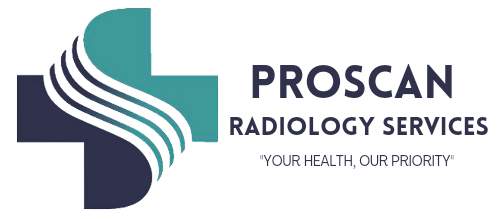
Computerized Tomography (CT) scans
We use a state-of-the-art 64-slice computed tomography (CT) scanner. Thanks to this technology, scanning times are reduced, and advanced studies can be performed.
What is a CT scan?
A CT scan combines a series of X-ray images taken from various angles inside the body. It uses computer processing technology to create cross-sectional images (slices) of the blood vessels, soft tissues and bones, inside the body. CT scan images provide more detailed information than X-rays do.
CT scan has many uses, but it's suitable to quickly examine people who may have internal injuries from car accidents or kinds of trauma. A CT scan can be used to visualize almost all parts of the body and is used to diagnose injury or disease or injury as well as to plan medical, surgical or radiation treatment.
Types of CT scans
At Proscan, we specialise in the following scans:
- Chest
- Brain
- Sinuses
- Facial Bones
- Abdomen / Pelvis
- Colonography
- Angiography
- Cervical Spine
- Thoracic Spine
- Lumbar Spine
- Joints
- Extremities
When do I need a CT scan?
Your doctor may recommend a CT scan to:
- Diagnose bone and muscle disorders, such as fractures and bone tumours
- Pinpoint the location of an infection, tumour, or blood clot
- Guide procedures such as biopsy, surgery, and radiation therapy
- Monitor and detect and diseases and conditions such as heart disease, cancer, liver masses and lung nodules
- Monitor the effectiveness of particular treatments, such as cancer treatment
- Detect internal bleeding and internal injuries
How to prepare for a CT scan
Preparation for a CT scan is largely dependent on the area being examined.
In general, we may ask for the following:
You will need to wear comfortable and loose-fitting clothing.
Oral preparation may be required for examinations of the abdomen-we will ask you to drink either water or a barium sulphate suspension about 1 and ½ hours before the examination.
If we need to inject a contrast agent during the procedure, we will arrange for blood tests to confirm that your renal functions are normal.
What to expect
CT scanners are shaped like a large doughnut that stands on its side. During the examination, you will lie on a narrow table that slides through the opening into a tunnel. Pillows and straps will be given to help you stay comfortable and in position. During a head CT, the table may be fitted with a special cradle to hold your head still. The detectors and x-ray tube will rotate around you while the table moves you into the scanner. Each rotation provides several images of thin slices of your body. You may hear buzzing and banging noises.
In a separate room, the Radiologist will be able to communicate with you. He/she may ask you to hold your breath at certain points to avoid blurring the images.

